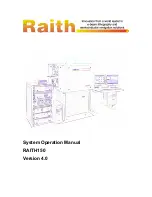
Section 1: Assembly & Set-Up
6/19/23
PR1048 & PR1060 Powered Rakes 314-299M
11
Section 1:
Assembly & Set-Up
Tractor Requirements
Tractor horsepower and hitch category should be within
the range noted below. The tractor’s weight must be
capable of controlling the Powered Rake under all
operating conditions. Tractors outside the horsepower
range must not be used.
Tractor horsepower rating. . . . . 33 hp (24.6 kW) max.
Hitch type. . . . . . . . . . . . . . . . . . . . . . . . 3-Point Cat. I
. . . . . . . . . . . . . . . . . . . . . .Quick Hitch Compatible
Power take-off speed . . . . . . . . . . . . . . . . . . 540 rpm
Hydraulic requirements
Hydraulic angling (Optional) . . . . . . . . Duplex outlet
Tractor weight. . . . . . . . . . . . . . . . See warning below
WARNING
!
To avoid serious injury or death:
Lightweight tractors with rear attached implements may need
weights added to the front to maintain steering control.
Consult your tractor Operator’s Manual to determine weight
requirements and maximum limitations.
Torque Requirements
Refer to
“Torque Values Chart”
on page 34 to
determine correct torque values for common bolts.
Before You Start
WARNING
!
To avoid serious injury or death:
Allow only persons to operate this implement who have fully
read and comprehended this manual, and who have been
properly trained in the safe operation of this implement.
Serious injury or death can result from the inability to read,
understand, and follow instructions provided in this manual.
Make sure the intended tractor conforms to the
on this page. Read and
understand the Operator’s Manual for your Powered
Rake. An understanding of how it works will aid in the
assembly and setup of your Powered Rake.
Go through the
To speed up the assembly task and to make the job safer,
have all needed parts and equipment readily at hand.
Tractor Shutdown Procedure
The following are basic tractor shutdown procedures.
Follow these procedures and any additional shutdown
procedures provided in your tractor Operator’s Manual
before leaving the operator’s seat.
1. Reduce engine speed and disengage power take-off
if engaged.
2. Park tractor and implement on level, solid ground.
3. Lower implement until it is flat on the ground or on
non-concrete support blocks.
4. Put tractor in park or set park brake, turn off engine,
and remove ignition key to prevent unauthorized
starting.
5. Relieve all hydraulic pressure to auxiliary hydraulic
lines.
6. Wait for all components to come to a complete stop
before leaving the operator’s seat.
7.
Use steps, grab-handles and anti-slip surfaces when
stepping on and off the tractor.
Pre-Assembly Checklist
Check
Reference
Have a forklift or loader with properly sized chains and
safety stands capable of lifting and supporting the
equipment on hand.
Have a minimum of two people available during
assembly.
Make sure all major components and loose
parts are shipped with the machine.
Operator’s
Manual
Double check to make sure all fasteners
and pins are installed correctly.
Refer to the Parts Manual if unsure.
NOTE:
All assembled hardware from the
factory should be installed in the correct
location. Remember location of a part or
fastener if removed. Keep parts separated.
Operator’s
Manual
Parts
Manual
314-299P
Make sure working parts move freely, bolts
are tight & guards are in place.
Operator’s
Manual
Make sure all safety labels are correctly
located and legible. Replace if damaged.
Make sure all grease fittings are in place
and lubricated.
















































